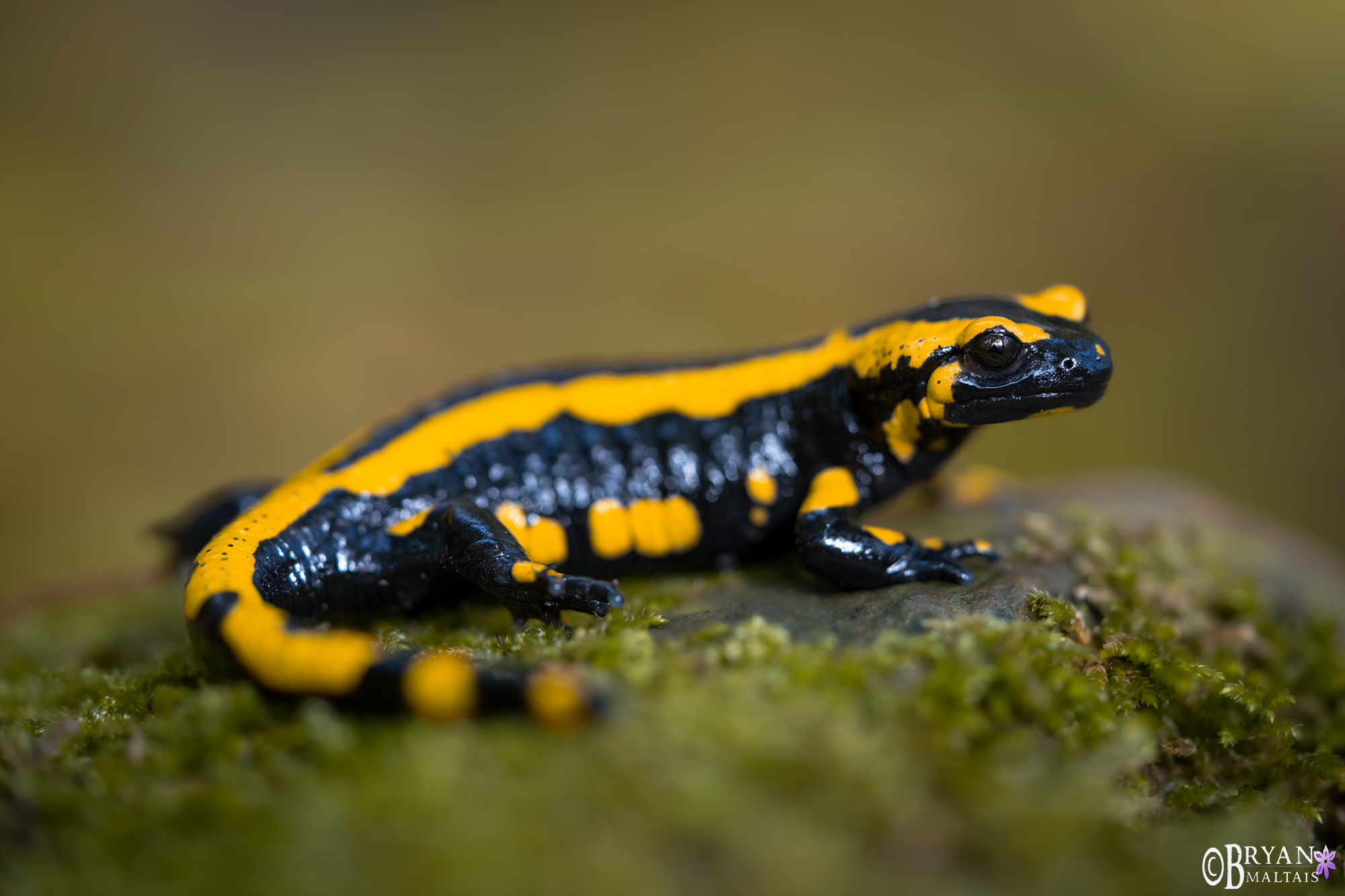
Germany Part II-The Black Forest, Vineyards and Ancient Villages
Germany Part III-Record Mushroom Bloom
The Fire Salamander
In Oct 2022 I visited Germany during fall colors to connect with family and the landscape that I love. Strolling through medieval villages, mysterious forests and encountering whimsical creatures each day was like being immersed in a story book. As a child I lived in Baden-Württemberg, the province comprising Germany’s southwest corner where my relatives still live. It’s a region of forested hills, vineyards, pastures and 1,000 year old towns. One of my favorite qualities about Germany (and much of Europe) is being able to walk practically everywhere. You can step out the door and walk to the next town through fields and forests on a network of public foot paths.
From my family’s town of Denkendorf (near Esslingen) I set out each day to explore a nearby forest. My goal was to photograph Fire Salamanders and other interesting life, and I ended up finding finding countless specimens. They’re my favorite of God’s creatures, which is why I made a nature documentary about them. To me, they’re more charismatic and endearing than other salamanders who have comparatively expressionless faces and dormant lifestyles. They also have surprising survival tactics that border on bizarre.
 Master Survivors
Master Survivors
Though beautiful, the forest pictured above is only 1 sq mi in area and surrounded by roads and agriculture. Despite this, Fire Salamanders routinely thrive on tiny habitat islands like this. Many other animals would eventually disappear from such small spaces from disease, starvation, inbreeding and death during migration. This happened to the Tiger Salamander In Fort Collins where I live. They emerge during rains and travel far distances to reach food and breeding spots. With increasing human influx, their grasslands got sliced up by roads, causing the entire breeding population to become roadkill in a short time. While common when I filmed this documentary about them, I haven’t been able to find any Tiger Salamanders within city limits for several years.
In contrast, Fire Salamanders are still abundant in the tiny forests that I’ve visited for decades because they posses an arsenal of survival strategies. For starters, they must rarely travel more than a few dozen meters to find mates and food because their habitat is moist with plentiful streams. This largely spares them from the dangers of migration (though not everywhere). During the recent droughts afflicting Germany, they survived by hunkering down deep within mammal burrows until rains returned. If drought prevents breeding, they have long enough lifespans to wait until rain returns. They normally reach 15 years in nature, and over 50 in captivity.
Their striking enamel-black body with lemon-yellow stripes is aposomatic coloration to warn predators of their neurotoxin poison. Should a predator err and take a bite, it will associate the harsh experience with the yellow spots and never make the same mistake. Native predators rarely try to eat Fire Salamanders on purpose. Wild Boar have been known to gobble them up by mistake while rooting through leaves and then spit them out from the foul taste. Unfortunately, the American Racoon has become invasive in Germany. He’s learned to flip salamanders over, eviscerate them, and dine on their edible entrails while avoiding the toxic skin. The various subspecies of Fire Salamanders have different yellow patterns. They can be spotted, striped and even entirely yellow. Baden-Württemberg is lucky enough to have overlap between salamanders with spots and long stripes.
Here’s where it gets even more interesting. Most salamanders lay fragile eggs that hatch into defenseless, plankton-sized larvae. The Fire salamander mother, on the other hand, carries her eggs internally until they hatch within her. She then deposits them directly into water as gilled larvae that are ready to hunt. Not only do more survive because they’re larger when laid, they also glean the protection of her poisonous body while unborn. Males drop a bead of sperm on the ground that females pick up with their cloaca. Females can store the sperm for a year and choose when to fertilize their eggs. While most females deposit larvae in spring that metamorphose in summer, some lay in fall that leave the water in spring. This produces two crops per year. Females accept sperm from multiple males, ensuring maximum genetic diversity within the population. This avoids inbreeding, which can produce unfit offspring.
In the small streams and ponds where they were laid, larvae density often becomes so high that they regularly cannibalize each other. While it may sound extreme, this strikes a balance to ensure maximum survival. It weeds out weaker individuals who would likely have died from starvation while increasing survival chances of the well-nourished individuals. It also makes space for all of the reproducing females in the forest to lay their offspring, ensuring maximum genetic diversity. Occasionally, they also bite off each others’ limbs, which regenerate into new ones. This phenomenon is being researched for its potential in human medicine. I captured interesting footage of cannibalism in my Fire Salamander documentary.
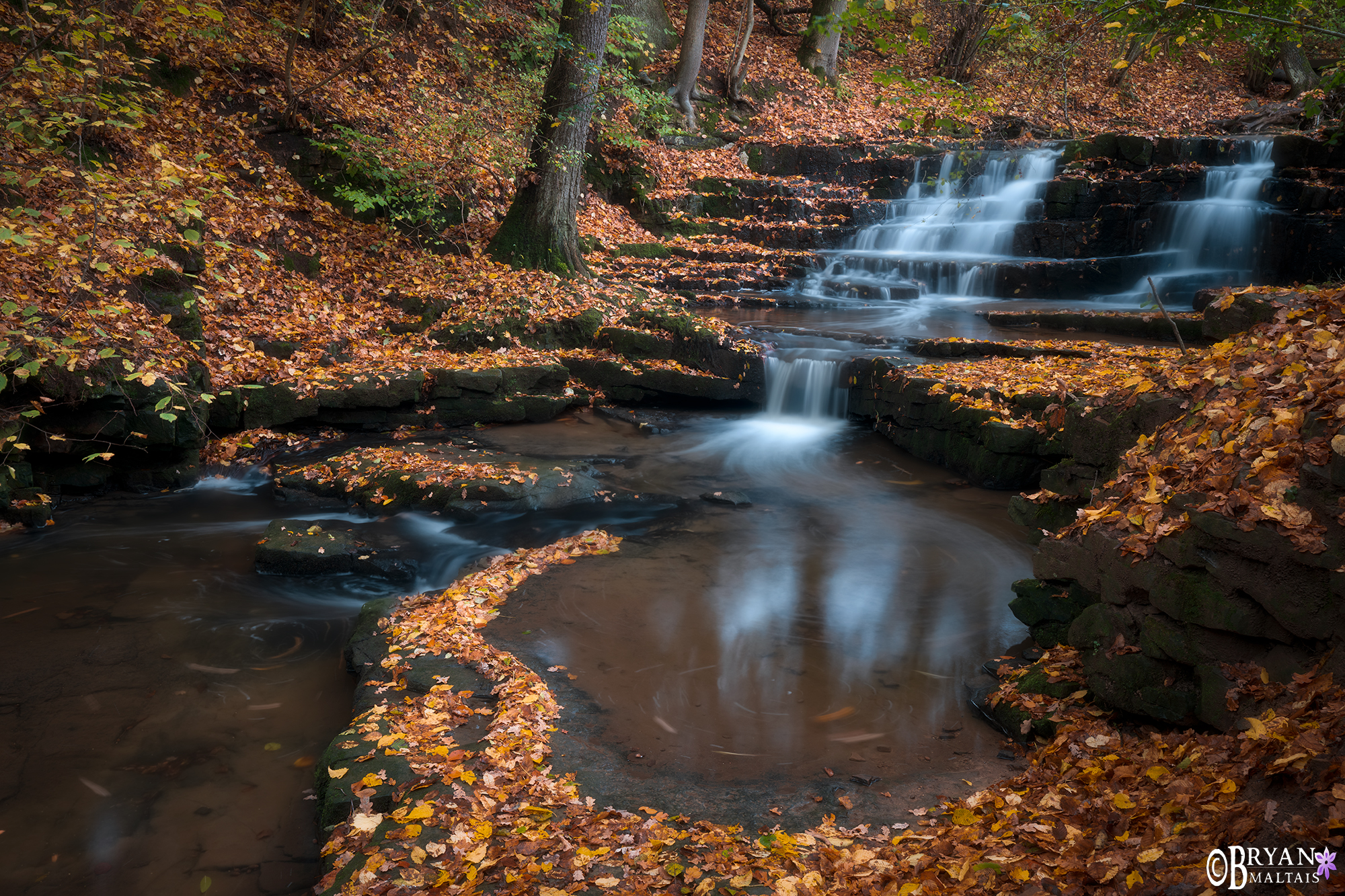 Streams like this serve as Fire Salamander nurseries in forests. This one flows through towns and pastures before arriving in this small forest. Its water quality isn’t pristine, but it’s devoid of fish, which is essential to Fire Salamander reproduction. Fire Salamanders breed in fishless waters because fish would devour the defenseless larvae as soon as they’re laid.
Streams like this serve as Fire Salamander nurseries in forests. This one flows through towns and pastures before arriving in this small forest. Its water quality isn’t pristine, but it’s devoid of fish, which is essential to Fire Salamander reproduction. Fire Salamanders breed in fishless waters because fish would devour the defenseless larvae as soon as they’re laid.
Amazingly, if water disappeared from their environment, some Fire Salamanders may be able to shift to bearing completely developed terrestrial offspring. In one study, females were prevented from accessing water to bear their young. After several broods of aquatic larvae perished on land, females began giving birth to land-dwelling babies. It’s unclear how the stress of not accessing water triggered this physiological change. Juveniles underwent complete metamorphosis within the egg. Females normally bear about 50 aquatic offspring, but in this conversion, most of the eggs were unfertilized and consumed for nourishment by their siblings. Sudden changes like this are made possible by epigenetics. It’s a mechanism that is baked into organisms, giving them the ability to adapt to sudden changes in the environment without going through eons of evolution. Essentially, genes that were always present, but not expressed, turn on when stimulated by environmental changes. In nature, the Oviedo Fire Salamander of northern coastal Spain bears fully formed offspring. This allows the peculiar city salamanders of Oviedo to live and reproduce on junk-filled city lots and mere strips of grass between buildings.
Though soft and cute, the Fire Salamander is a resilient survival machine, created with astounding mechanisms to pump offspring out into its environment.
 Juvenile Fire Salamanders tend to have a higher proportion of yellow markings, which spread apart as they grow.
Juvenile Fire Salamanders tend to have a higher proportion of yellow markings, which spread apart as they grow.
Bsal Fire Salamander Extinction
In German, Fire Salamanders are affectionately refereed to as “Regenmännchen“, which means “Little Rain Men”. I want to experience them while they last because in Germany they may not for much longer. Bsal (Batrachochytrium salamandrivorans) is a highly infectious fungus that kills Fire Salamanders when it contacts their skin. It’s spreading across Europe, eradicated Fire Salamanders in its path. Bsal was accidentally released from Asia through the pet trade. It has already caused salamander extinction in Belgium and the Netherlands. It has since crossed into Germany where it has exterminated Salamanders from the Eifel Forest. Shortly before this writing, hundreds of infected dead Salamanders were discovered in the Wupertal region west of the Eifel. Bsal doesn’t just spread through diffusion, but has jumped to isolated locations far from its origin. Dispersal most likely happens when people drag spores from infected areas into new ones on their shoes and vehicle tires. Surfaces can be disinfected of Bsal simply by spraying them with bleach or fungicide. Bsal was only discovered in 2010, with evidence of its arrival to Europe by 2004.
For Fire Salamanders to evolve resistance, natural resistance to Bsal must already exist in a few individuals within a population. As the rest of the population gets wiped out, they would be the ones who survive to repopulate with Bsal resistant offspring. No such resistance has been proven, and Bsal destroys their skin too quickly for individuals to recover and continue reproducing. It’s easy enough to cure individual Salamanders with a fungicidal bath. However, this isn’t effective in nature with many infected salamanders and Bsal spores in the water and soil that can continue to reinfect. Theoretically, after a local extinction caused by Bsal, distant Salamanders would eventually move in and repopulate the vacant area after Bsal disappears from the environment. This would be unlikely in today’s fragmented environment, but could be performed by humans.
For now the Fire Salamander is still profoundly abundant in Baden-Württemberg forests. Their baked-in survival mechanisms have allowed them to flourish in the face of extreme drought and habitat loss, yet a spore is what threatens to erase them.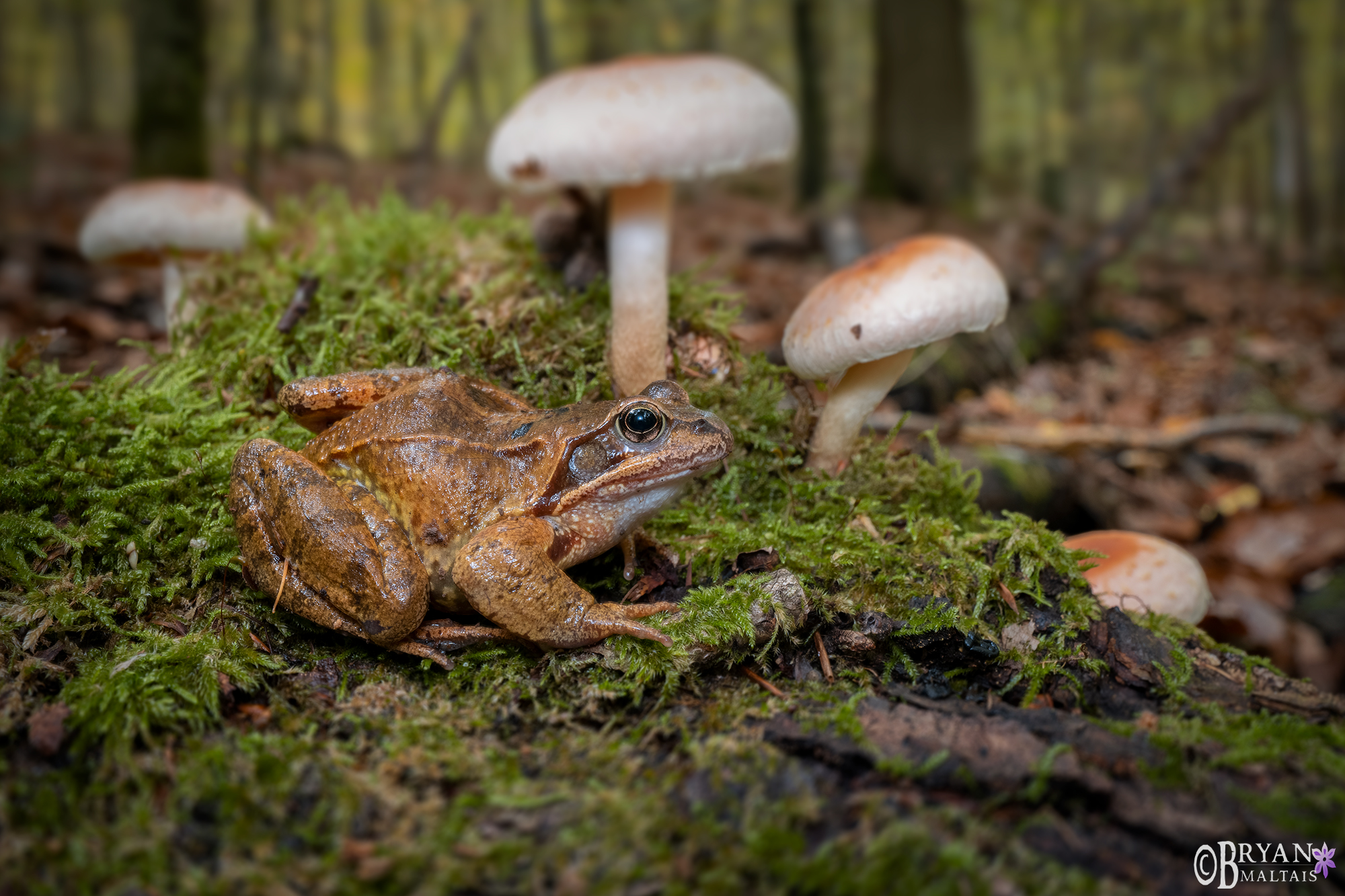 Other prevalent amphibians like the Grassfrosch/European Common Frog and Bergmolch/Alpine Newt can carry Bsal and spread it to Fire Salamanders while not dying from it themselves.
Other prevalent amphibians like the Grassfrosch/European Common Frog and Bergmolch/Alpine Newt can carry Bsal and spread it to Fire Salamanders while not dying from it themselves.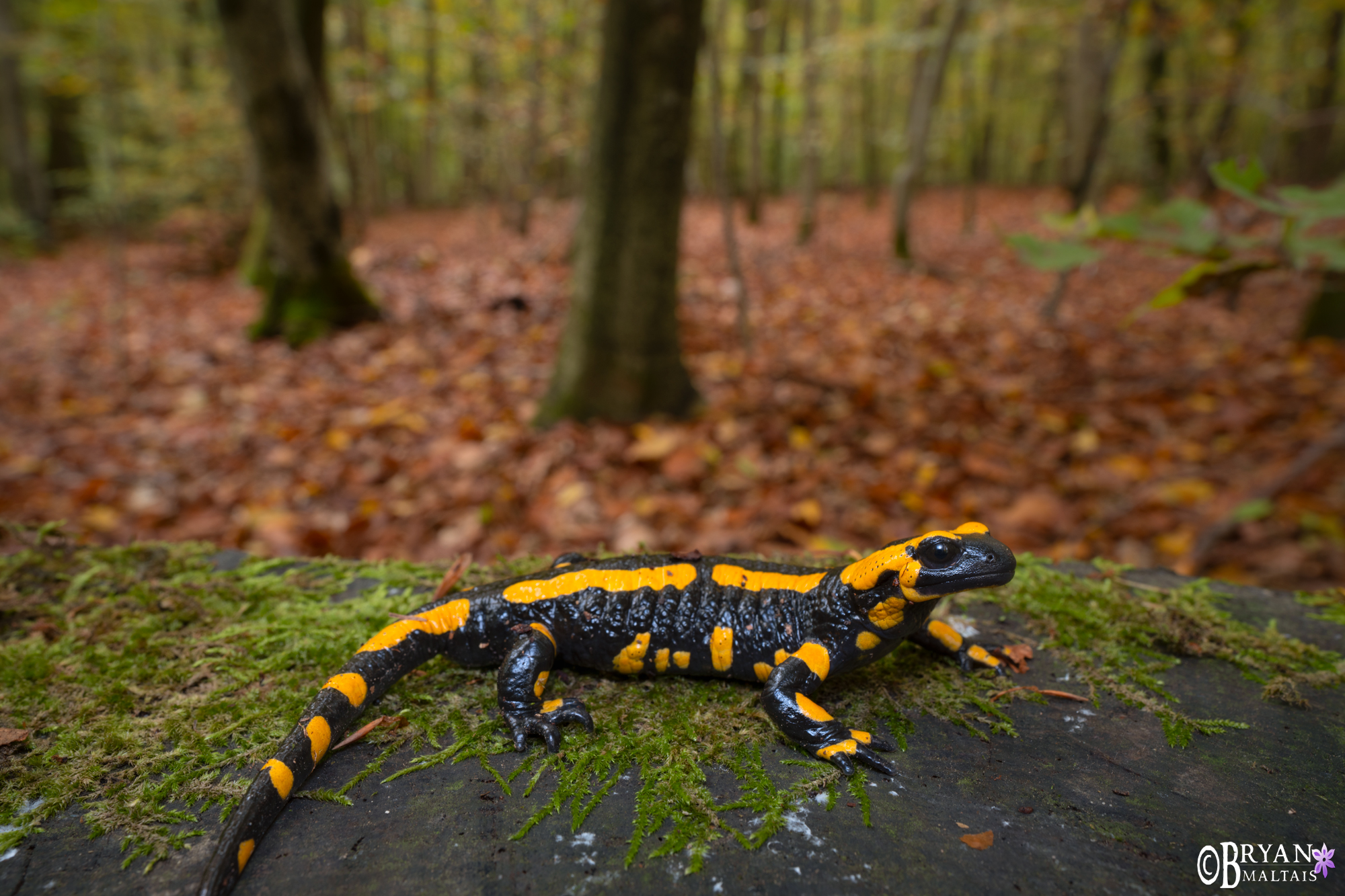 In this photo I exposed for the ambient forest light and fired fill flash to illuminate the Salamander. Without it, the animal would have been nearly black in its own shadow. The measure of successful fill flash is when the subject is nicely exposed, without the tell-tale signs of flash; harsh shadows and overexposed spots. This is accomplished by using a diffuser to evenly broadcast the light. Second, you need to adjust flash output manually instead of using TTL (auto). TTL tries to expose the entire scene, which ends up overexposing the foreground. Being so close, I set my flash output to 1/32 full power.
In this photo I exposed for the ambient forest light and fired fill flash to illuminate the Salamander. Without it, the animal would have been nearly black in its own shadow. The measure of successful fill flash is when the subject is nicely exposed, without the tell-tale signs of flash; harsh shadows and overexposed spots. This is accomplished by using a diffuser to evenly broadcast the light. Second, you need to adjust flash output manually instead of using TTL (auto). TTL tries to expose the entire scene, which ends up overexposing the foreground. Being so close, I set my flash output to 1/32 full power. 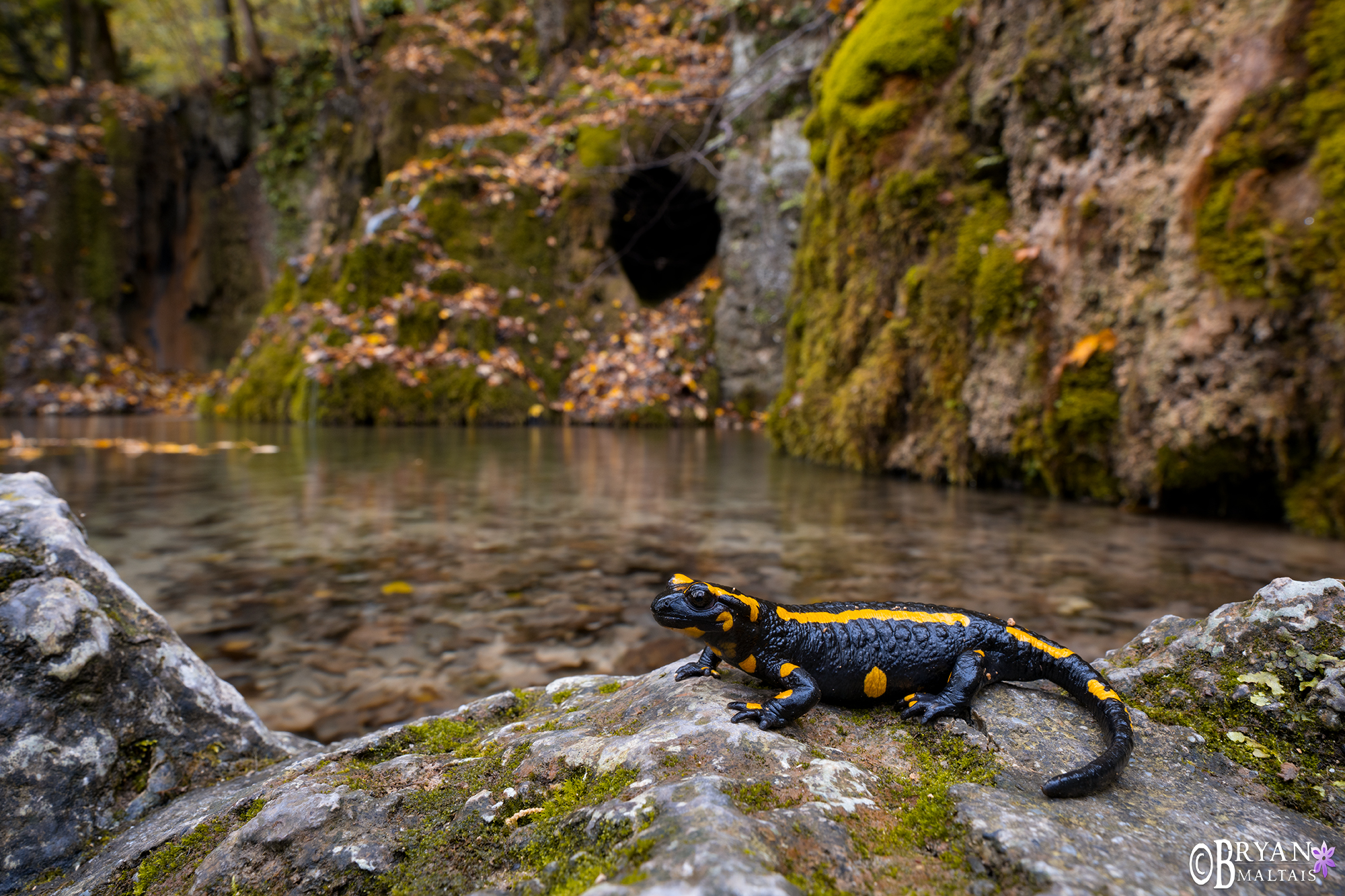 I found this plump female on the Schwäbische Alb/Swabian Jura. It’s a vast plateau composed of underlying karst geology (limestone), covered with thick Beech forests and agriculture. Springs emerge from the face of the plateau that contain so much calcium carbonate that it crystalizes on moss and forms new limestone. As the the limestone grows, it forms basins called sinter terraces. In this photo, the mossy walls are slowly growing forward as the water trickling out of them deposites calcium that solidifies. It’s the same process that forms stalagmites in caves and hard water stains in your tub. Fire Salamanders use this pool to deposit their larvae. They normally do this in in Spring, but my friend Volker Kugel found a freshly laid larva when we were here in late October.
I found this plump female on the Schwäbische Alb/Swabian Jura. It’s a vast plateau composed of underlying karst geology (limestone), covered with thick Beech forests and agriculture. Springs emerge from the face of the plateau that contain so much calcium carbonate that it crystalizes on moss and forms new limestone. As the the limestone grows, it forms basins called sinter terraces. In this photo, the mossy walls are slowly growing forward as the water trickling out of them deposites calcium that solidifies. It’s the same process that forms stalagmites in caves and hard water stains in your tub. Fire Salamanders use this pool to deposit their larvae. They normally do this in in Spring, but my friend Volker Kugel found a freshly laid larva when we were here in late October.
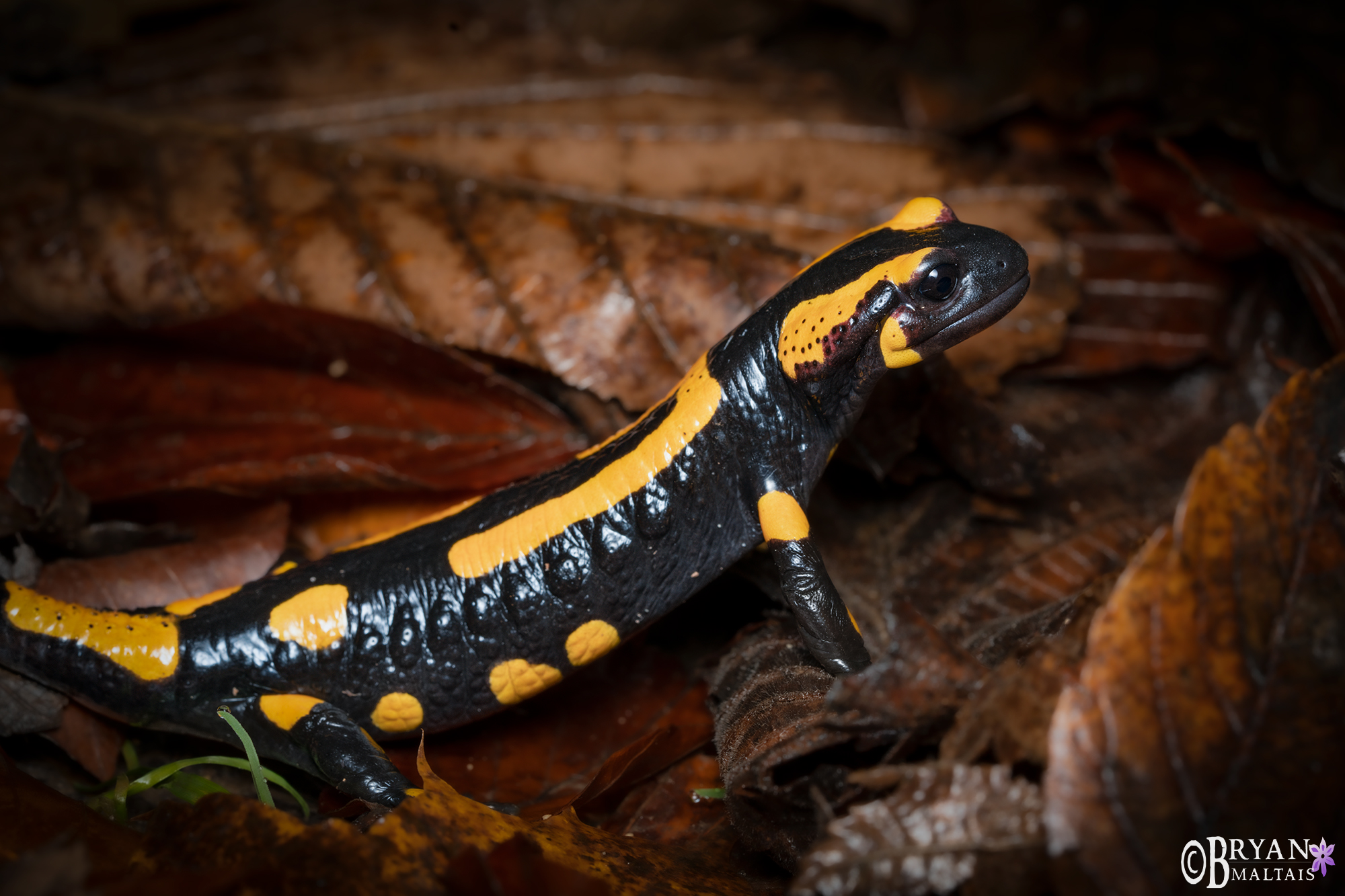 Fire Salamander behavior is unique among salamanders. It’s North America cousin that occupies a similar niche is the Spotted Salamander. But they conduct their entire lives underground in mammal burrows, and primarily emerge during few rainy days in early spring to breed. During the other 51 weeks of the year you’d never know they exist.
Fire Salamander behavior is unique among salamanders. It’s North America cousin that occupies a similar niche is the Spotted Salamander. But they conduct their entire lives underground in mammal burrows, and primarily emerge during few rainy days in early spring to breed. During the other 51 weeks of the year you’d never know they exist.
In contrast, Fire Salamanders emerge en masse any time it rains from early Spring to late Fall. They come out to devour worms and slugs, and to reproduce. On rainy nights in forests with healthy populations you can observe hundreds crossing paths, crawling through leaves and perched on logs. I’ve noticed that after long spells without rain, the entire population emerges at once when it finally rains. If it continues to rain several nights in a row, fewer emerge on subsequent nights because they’ve already been satiated. Watching hundreds of these little sprites emerg into the forest at night is enchanting. Unlike other salamanders, they even come out in broad daylight during rain.
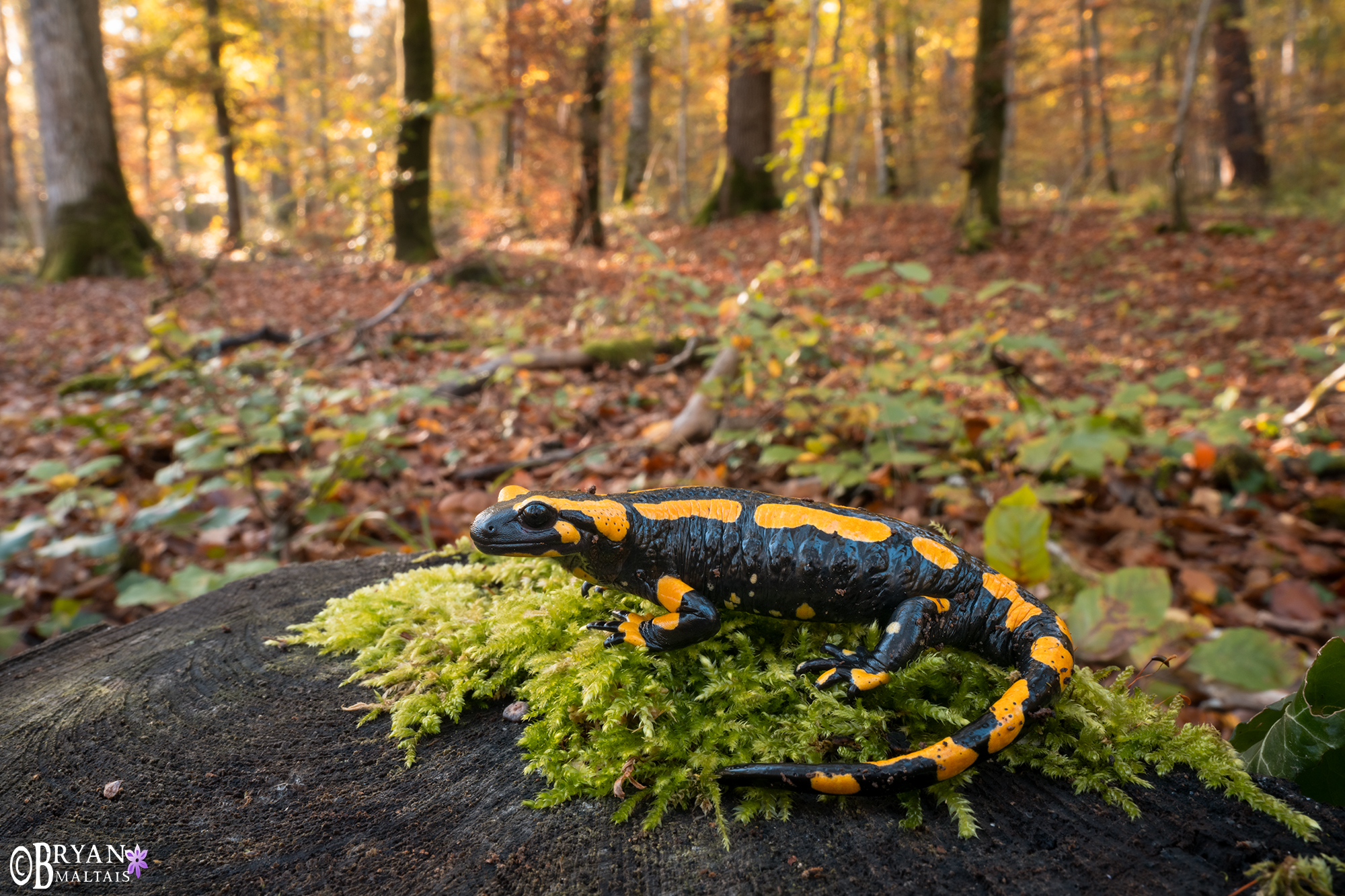 Fire Salamanders inhabit deciduous oak/beech forests with thick carpets of fallen leaves. They don’t inhabit coniferous forests with acidic soil. Unfortunately, many of Germany’s broad-leaf forests have been converted to Spruce because they’re fast growing and profitable for timber harvest.
Fire Salamanders inhabit deciduous oak/beech forests with thick carpets of fallen leaves. They don’t inhabit coniferous forests with acidic soil. Unfortunately, many of Germany’s broad-leaf forests have been converted to Spruce because they’re fast growing and profitable for timber harvest.
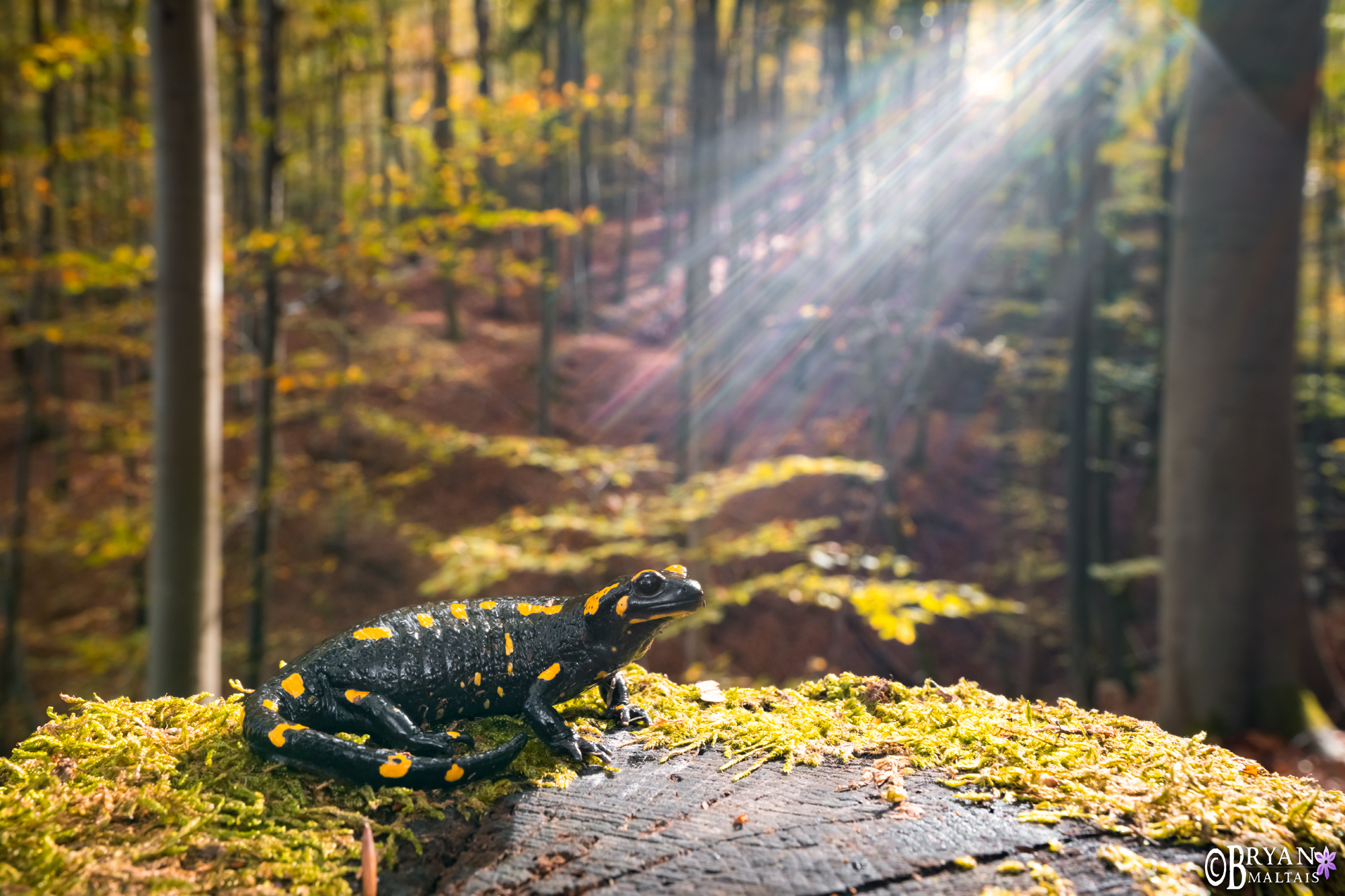 Lens flare is an artifact that happens when shooting directly into the sun. It’s either undesirable or adds pizazz if harnessed. As I waited for this female to pose pretty, the sun sunk just low enough for it to shine through the leaves and cast these accentuating rays into the Salamander. Because the sun was in front of the lens, this meant the salamander was backlit so I used fill flash to illuminate it.
Lens flare is an artifact that happens when shooting directly into the sun. It’s either undesirable or adds pizazz if harnessed. As I waited for this female to pose pretty, the sun sunk just low enough for it to shine through the leaves and cast these accentuating rays into the Salamander. Because the sun was in front of the lens, this meant the salamander was backlit so I used fill flash to illuminate it.
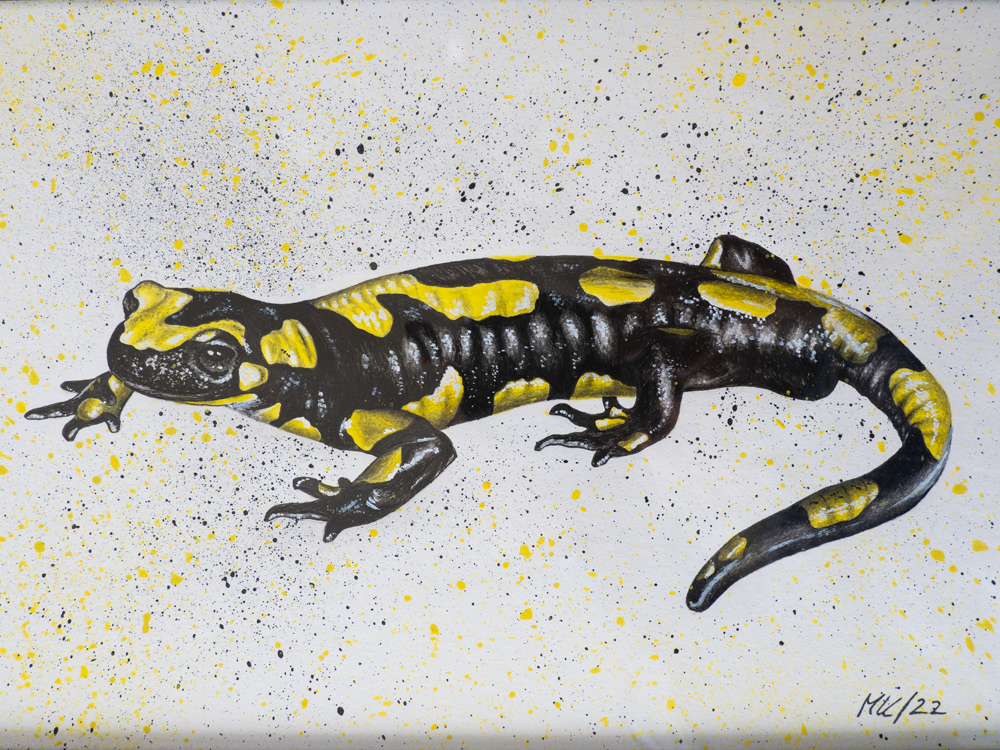
My good friends Stephan and his daughter Marie introduced me to the Sauberwald, one of my favorite little forests in Baden-Württemberg where I’ve photographed many Fire Salamanders. Marie happens to be a brilliant artist and drew this beautiful Salamander as a gift to me. “Sauberwald” means “Magic Forest” and it’s our special name for this place because I want to protect its location.
Continue reading…

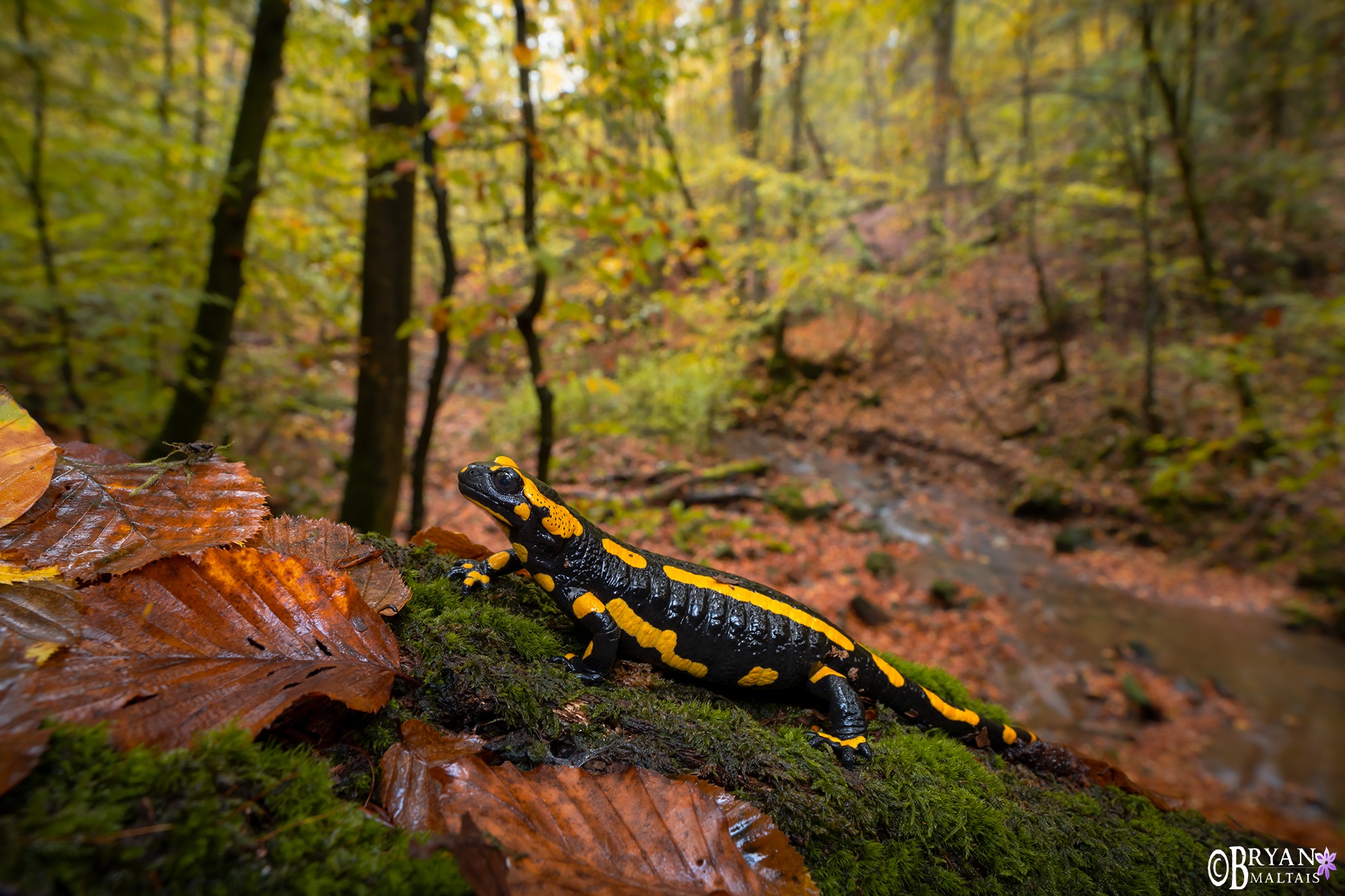 Master Survivors
Master Survivors